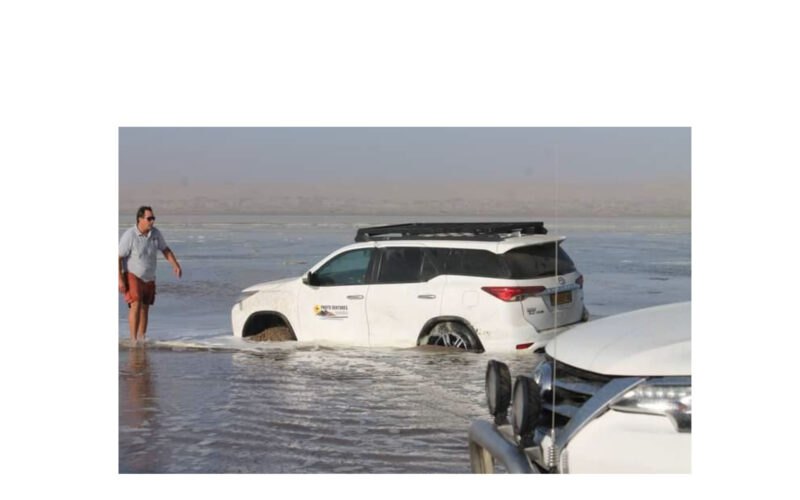Niël Terblanché
Severe weather and high seas conditions have caused chaos along the coastlines of several Southern African countries over the past few days.
Maersk, a leading international shipping conglomerate, has diverted two of its colossal container ships due to the adverse weather, rerouting them to the port of Walvis Bay.
The company released a statement explaining the drastic measure: “The Maersk Sofia and Maersk Sheerness, are significantly affected by the weather around the coast, prompting us to omit Cape Town West Bound calls for both vessels.”
The company said all Cape Town imports will be discharged in Walvis Bay and will tranship back to Cape Town on the Maersk Sheerness’s East Bound call.”
The tumultuous weather is not only causing disruptions in sea transport but has also left tourists stranded in Namibia.
Visitors venturing to the popular Sandwich Harbour were cut off from the mainland for hours, thanks to an unusual combination of high waves and spring tide.
This combination effectively created an island, forcing visitors and tour guides to wait for the tide to subside. Several vehicles became trapped in wet sand, requiring rescue efforts from Walvis Bay.
While no injuries were reported among the stranded tourists, the situation is in stark contrast to South Africa, where freak waves killed and injured several people.
The South African Weather Services attributed the weekend’s storm surge, which affected both the Western Cape and KwaZulu-Natal coastlines, to a potent low-pressure system in the Atlantic Ocean.
Gale-force winds of up to 110 kilometres per hour combined with a broad expanse of the ocean led to waves almost nine meters high in KwaZulu-Natal.
One particularly tragic incident saw a 93-year-old woman lose her life after being overwhelmed by a wave in a parking lot at Leentjiesklip along the Garden Route.
On Sunday, a restaurant on the KZN South Coast was hit by a massive wave, injuring more than seven patrons, five of whom were hospitalized.
The combination of spring tides and the new moon phase exacerbated the situation, causing more water to move towards the shore.
The South African Weather Services had forewarned of the storm surge, issuing a warning on Thursday for the Western Cape and on Saturday for KwaZulu-Natal.
In light of the devastating effects of this weather system, the public is strongly advised to heed tide patterns and stay updated on weather warnings.




